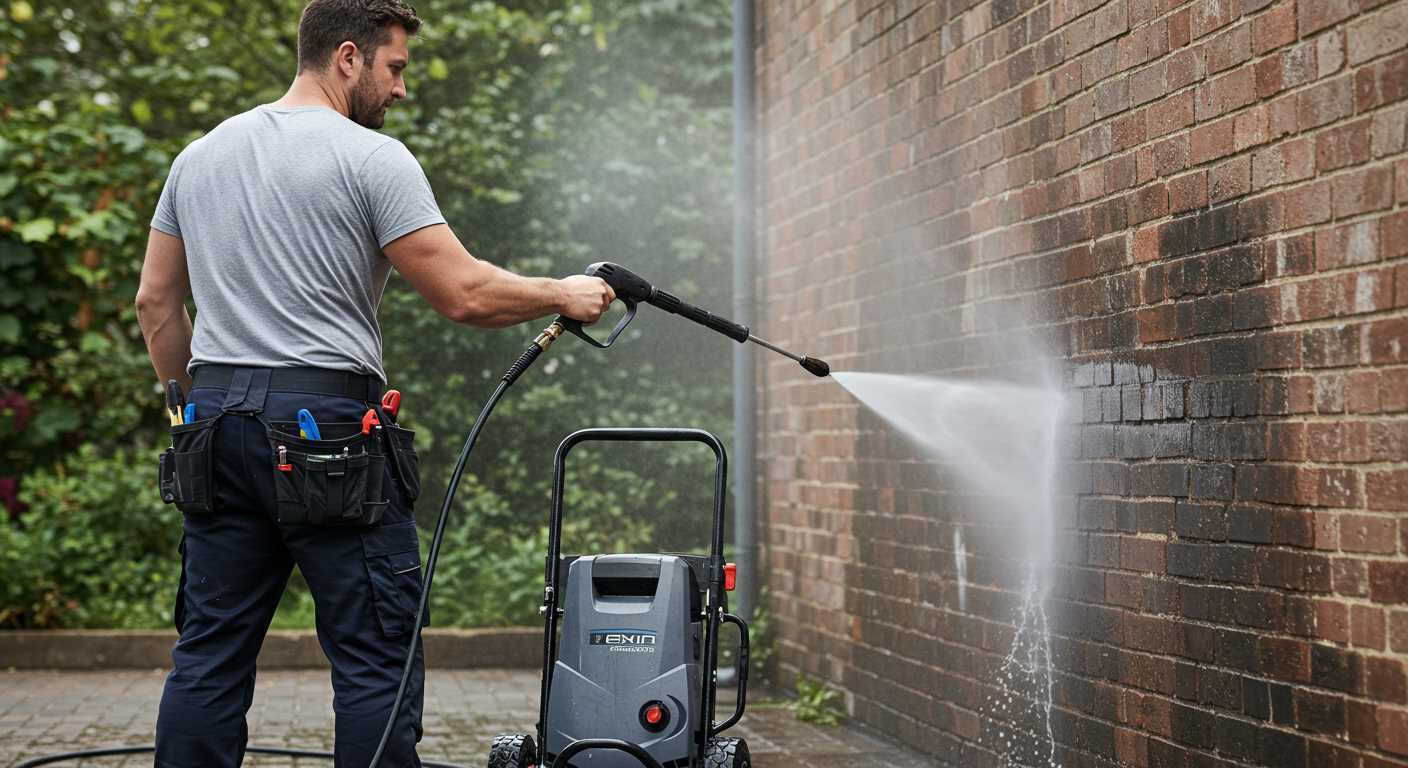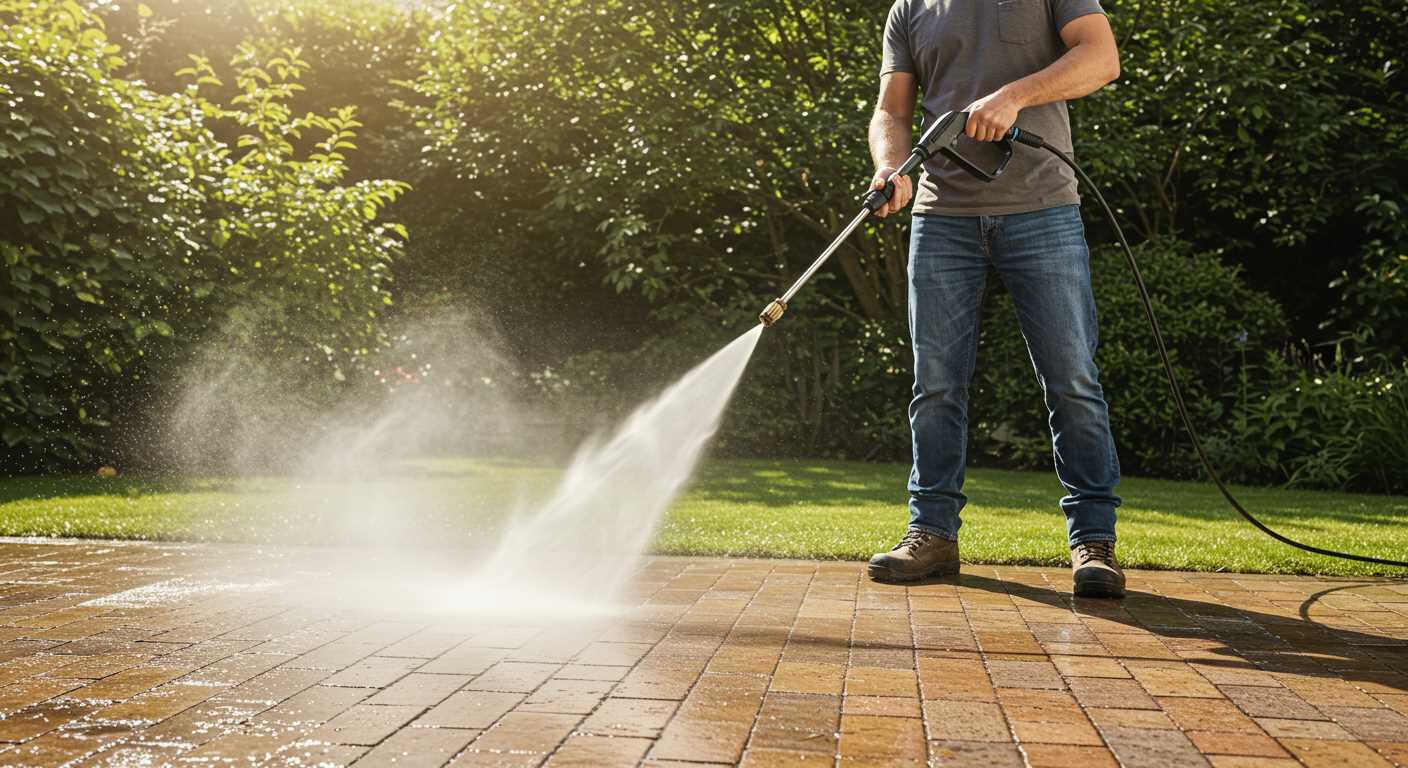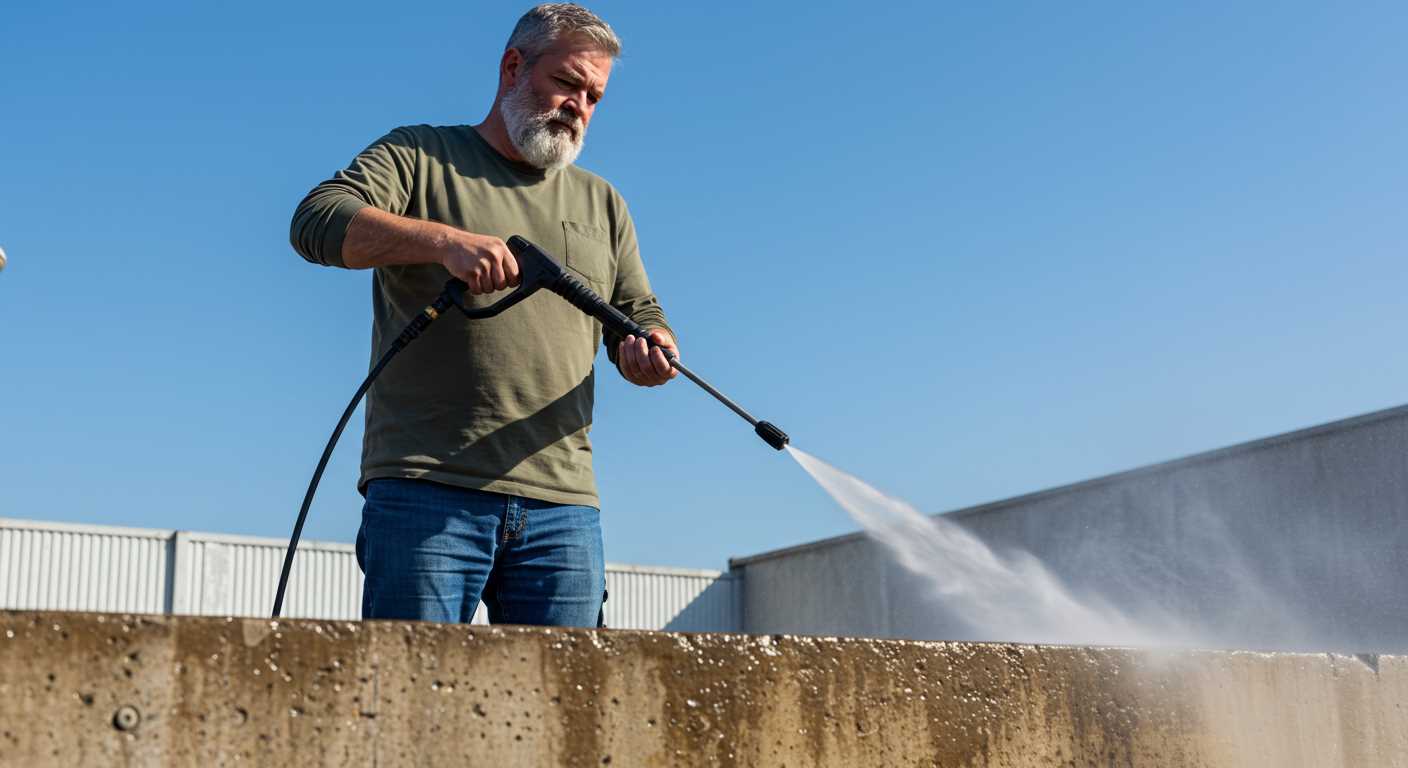

To achieve a pristine finish on your driveway or patio, I recommend using a combination of warm soapy water and a stiff-bristled broom. This method effectively removes dirt and grime without the need for high-pressure methods that can damage the surface. Begin by sweeping the area to eliminate loose debris, ensuring a smoother cleaning process.
Next, mix a solution of warm water and a pH-neutral detergent. Apply the mixture liberally over the surface, allowing it to sit for a few minutes to loosen stubborn stains. With a stiff-bristled broom, scrub the surfaces in circular motions, paying extra attention to any stained areas. Rinsing with clean water will help in washing away the soap and any remaining dirt.
After rinsing, consider using a joint filler to address any gaps or missing materials between the sections. This not only enhances the appearance but also prevents future weed growth. Regular maintenance with this straightforward approach ensures that your outdoor surfaces remain attractive and well-kept throughout the year.
Optimal Approach for Maintaining Your Paving Stones
Utilising a hard-bristle broom to sweep away loose debris is a solid first step. This action removes dirt, leaves, and small particles that can hinder the following cleaning process. Regular sweeping can prolong the longevity of your surfaces.
Utilising Soapy Water Solutions
Mix warm water with a mild detergent. Apply this solution to the surface using a mop or a cloth, ensuring even coverage. Allow it to sit for a period, enabling it to break down ingrained grime. Then, scrub with a stiff brush, paying special attention to any stained areas.
Advanced Stain Removal Techniques
For stubborn stains, consider a paste made from baking soda and water. Apply it directly onto the affected area, and let it soak for 30 minutes before scrubbing. Rinsing the spots with clean water afterwards ensures that no residue remains. For moss or algae, a mixture of vinegar and water can effectively tackle growth, providing a more natural cleaning alternative.
Choosing the Right Cleaning Solution for Block Paving
For tackling your outdoor surfaces, I recommend selecting a solution based on their material and the extent of staining. A combination of water with baking soda or vinegar proves effective against grime and organic matter. Both are environmentally friendly and safe.
In more challenging cases, a commercial cleaner designed for outdoor surfaces can help. Opt for a formula that specifically targets mildew, algae, or oil stains. Ensure the product is pH-neutral to avoid damaging the surface.
Before applying any solution, pre-wet the area to minimise absorption and enhance performance. Use a brush with stiff bristles to agitate the cleaner into the surface. Allow it to dwell for the recommended time on the label to achieve optimal results.
Lastly, consider your safety and the environment. Always test a small, inconspicuous area before full application to check for any adverse reactions. This way, you safeguard the integrity of your outdoor space while achieving a fresh appearance.
How to Remove Weeds from Between Block Paving Stones
To tackle unwanted greenery between your stone slabs effectively, I recommend using a few simple home ingredients and tools. Begin by boiling water–this method is incredibly straightforward. Pour the boiling water directly onto the weeds, ensuring you dampen the roots. This method is particularly useful as it doesn’t introduce any chemicals into your environment.
Natural Solutions
If boiling water is not sufficient, you can create a vinegar solution. Combine equal parts white vinegar and water in a spray bottle. Spray directly onto the unwanted plants during sunlight for enhanced potency. The acetic acid in vinegar works as a desiccant, drying out the foliage and roots.
| Method | Ingredients | Application |
|---|---|---|
| Boiling Water | Water | Pour directly onto the weeds, focusing on roots. |
| Vinegar Solution | White vinegar, water | Spray on foliage during sunny weather for maximum effect. |
| Salt Treatment | Salt, water | Mix salt with water to create a paste, apply directly to the leaves. |
Preventive Measures
Once you’ve addressed the current weed issue, take steps to prevent regrowth. Regularly remove debris and leaves, as they can provide a nurturing environment for seeds to germinate. Applying a layer of sand in the joints can also inhibit growth by blocking light and moisture access. Consider using a natural mulch or gravel surface, which can also deter weed development.
Combining these methods will not only help in eliminating unwanted plants but assist in maintaining the overall appearance and integrity of the surface. Regular attention is key to keeping your outdoor area looking sharp.
Step-by-Step Guide to Manual Scrubbing Techniques

Prepare the area by clearing any loose dirt or debris with a broom. This initial step ensures that the scrubbing process focuses on the ingrained grime and stains.
Select an appropriate stiff-bristled brush. Invest in a quality tool, as its sturdiness will aid in loosening dirt embedded in the joints between stones.
Mix a specialised solution using warm water and a concentrated cleaning agent designed for outdoor surfaces. The correct ratio usually is about one part cleaner to ten parts water.
Soak the surface with the cleaning solution. Apply it evenly across the area, ensuring thorough coverage. Allow the solution to dwell for approximately 10-15 minutes, letting it penetrate the dirt.
Begin scrubbing using the stiff-bristled brush. Work in sections, applying firm pressure in a circular motion. This method effectively dislodges dirt from the pores of the stones.
For stubborn stains or areas with heavy discolouration, use a putty knife to gently scrape off the top layer of grime before scrubbing.
After scrubbing, rinse off the area with a bucket of clean water. Alternatively, use a hose with a controllable nozzle to prevent excessive force. Ensure all cleaning residues and loosened debris are thoroughly washed away.
Inspect the surface once dried. If some areas need additional attention, repeat the scrubbing method where necessary.
Once satisfied, consider sealing the surface with a suitable sealer to protect against future staining and enhance appearance.
Utilising Household Ingredients for Stain Removal
For effective stain treatment, a few common household products can yield impressive results. Here are some options I’ve found particularly useful:
- Baking Soda Paste: Combine baking soda with water to create a paste. Apply it to stubborn stains and let it sit for 15-30 minutes before scrubbing with a brush.
- Vinegar Solution: Mix equal parts white vinegar and water in a spray bottle. Spray onto affected areas, allow to soak for approximately 10 minutes, and scrub away. This method is especially effective against oil marks.
- Dish Soap Mix: Blend a few drops of liquid dish soap with warm water. Use this solution for routine maintenance by scrubbing the surface lightly before rinsing off.
- Lemon Juice and Salt: For organic stains like those from leaves, sprinkle salt on the stain and then squeeze fresh lemon juice over it. Leave for 20 minutes before washing off.
Using these ingredients regularly helps maintain appearance and prevents the buildup of more severe stains, making long-term maintenance simpler. For best results, consider the type of stain and adjust the method accordingly.
Tips for Rinsing and Drying Block Paving Thoroughly

After scrubbing the surface, it’s crucial to rinse off any cleaning solution effectively. Start by gathering a bucket of warm water. Using a stiff broom, dip it into the water and sweep the area to distribute moisture evenly. This method helps in loosening any residual dirt and soap.
Rinsing Techniques
- Utilise a hose with a spray nozzle to control the flow of water. This allows for targeted rinsing.
- Consider rinsing in sections, gradually working your way across the paved area. This ensures complete coverage.
- Add a splash of white vinegar to the rinse water for extra shine and to assist in removing soap residue.
- Always rinse away from any adjacent areas like gardens or wooden surfaces to prevent overflow damage.
Once rinsing is complete, drying becomes the next priority. Quick drying prevents water stains or moss growth.
Drying Strategies
- Use absorbent towels or a squeegee to remove excess water from the surface. Work in sections for efficiency.
- Leave airflow to assist in drying. Position fans or open windows nearby if you’re in an enclosed space.
- Allow natural sunlight to aid the drying process. If the weather permits, consider washing earlier in the day for maximum sun exposure.
- After the majority of moisture is gone, sweep the area with a dry broom to catch any remaining puddles.
Following these rinsing and drying methods keeps the tiles looking pristine and prolongs their lifespan.
Maintaining Paved Surfaces After a Deep Clean
Regular treatment can prolong the life of your surfaces significantly. After a thorough cleansing, focus on applying a sealant. This will help protect against staining and water infiltration. Choose a high-quality product designed for this type of material; it creates a barrier that enhances durability.
Another key aspect is joint maintenance. After deep cleaning, check for any loose or displaced materials in the joints between stones. Top these up as necessary with kiln-dried sand or polymeric sand, ensuring a tight fit to prevent weed regrowth.
To maintain optimal appearance and functionality, schedule periodic inspections. Look for signs of wear or damage. Address any issues immediately to prevent escalation. Regular brushing or sweeping will help keep dirt and debris from settling in, allowing airflow that aids drying and decreases the likelihood of moss or algae growth.
Watering the surface lightly after applying the sealant can enhance absorption, ensuring proper adhesion. Avoid heavy foot traffic for a specified duration to allow the product to cure fully, which contributes to the longevity of the finish.
For residents in rainy areas, consider a slightly elevated edge around areas to divert excess water. This reduces deterioration from pooling, which can be detrimental to maintenance efforts.
In summary, consistent upkeep involves sealant application, joint replenishment, quick damage repair, and monitoring for vegetation regrowth. Engaging in these practices will help preserve the aesthetic and function over time.
When to Call in Professional Help for Block Paving Care
Consider seeking expert assistance if the surface shows severe discolouration, significant moss or algae growth, or deep-set stains from oil or chemicals that household remedies cannot fully address. Professionals possess advanced tools and effective solutions tailored for stubborn issues that may be beyond typical home remedies.
Signs Indicating Professional Attention

| Issue | Description |
|---|---|
| Severe Staining | Persistent marks that resist standard treatments. |
| Moss/Algae Growth | Extensive coverage that can cause slippery hazards. |
| Uneven Settling | Noticeable dips or protruding stones affecting safety. |
| Joint Damage | Cracked or missing sand or grout between stones. |
| Excessive Weeds | Weeds that invade in large quantities, despite maintenance. |
Engaging professionals can also offer insights into routine maintenance strategies and long-term care plans tailored for your specific needs, ensuring longevity and aesthetic appeal of the surfaces.
FAQ:
What are the best methods to clean block paving without using a pressure washer?
There are several effective methods to clean block paving without the use of a pressure washer. One of the simplest approaches is to use a stiff-bristled broom to sweep away dirt and debris. Following that, you can prepare a cleaning solution using warm water mixed with a gentle detergent or vinegar. Apply the solution to the paving and scrub the surfaces using a brush to remove stains and grime. For persistent stains, a paste made from baking soda and water can be applied directly and left to sit for some time before scrubbing. Rinsing the area thoroughly with clean water after cleaning is crucial to remove any residual cleaning agents. Additionally, if you notice weeds or moss, applying a mixture of salt and water can help tackle these issues.
Can I use vinegar for cleaning block paving, and how should I apply it?
Yes, vinegar can be an effective cleaning agent for block paving due to its natural acidity, which helps break down grime and stains. To use vinegar, mix it with warm water in a spray bottle at a ratio of one part vinegar to three parts water. Lightly spray the solution over the stained areas of the block paving and allow it to sit for about 10 to 15 minutes. This waiting period helps the vinegar penetrate and lift the dirt. Then, use a stiff brush to scrub the area, focusing on the most stained sections. After scrubbing, it’s important to rinse the paving with clean water to wash away any leftover vinegar and dirt. This method is particularly useful for maintaining the appearance of your block paving without causing damage.








